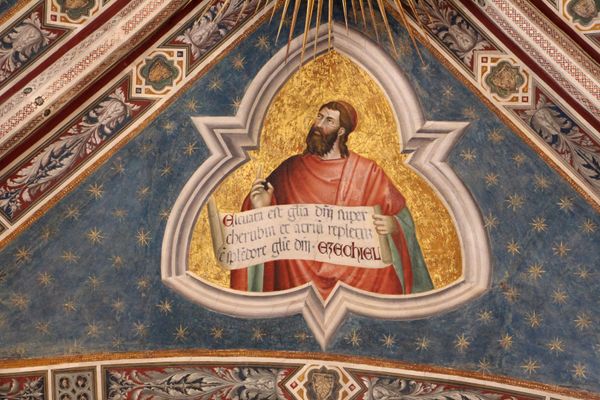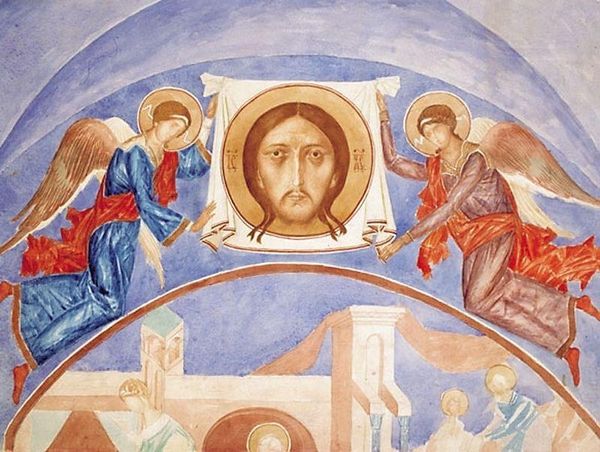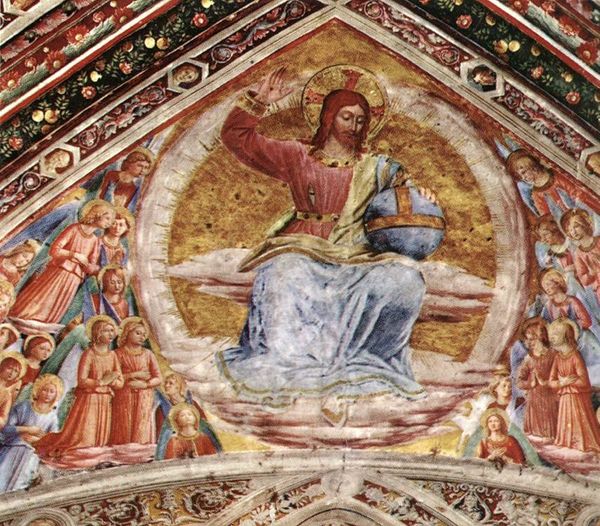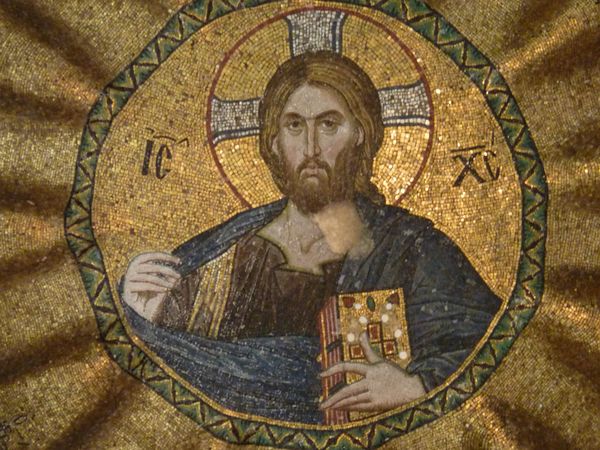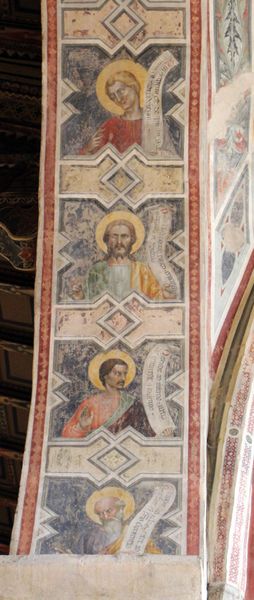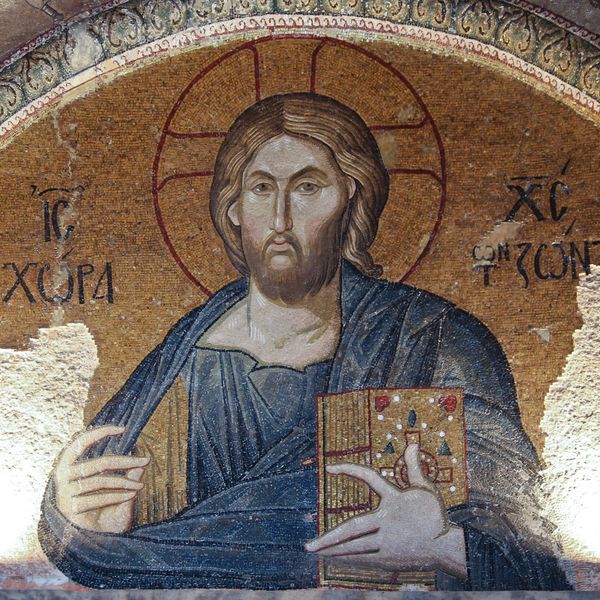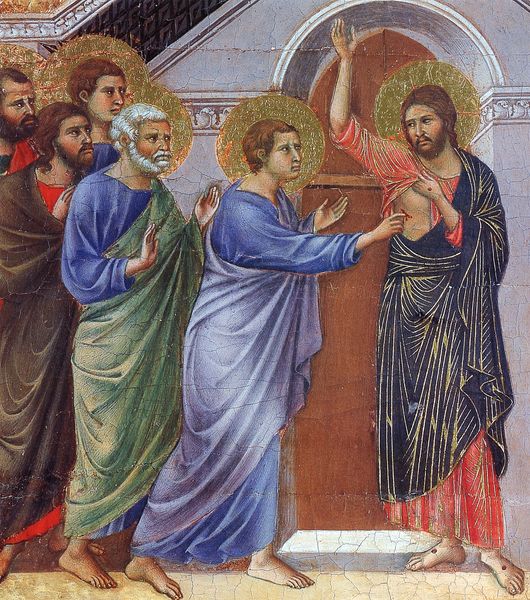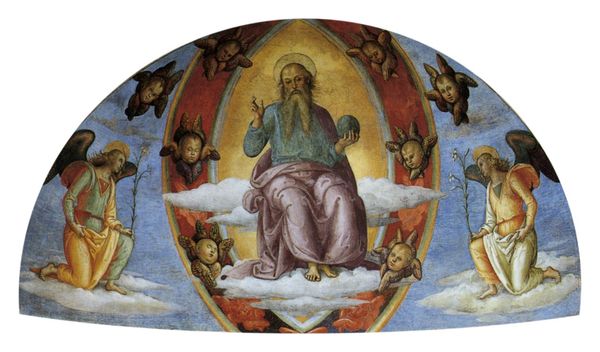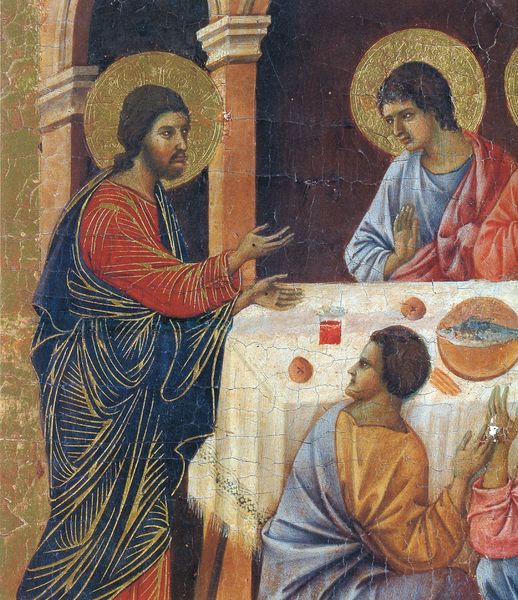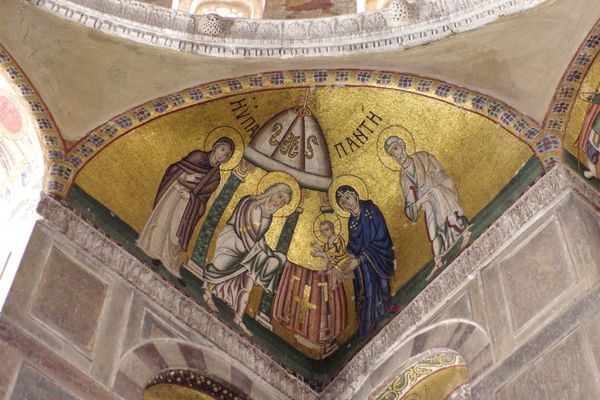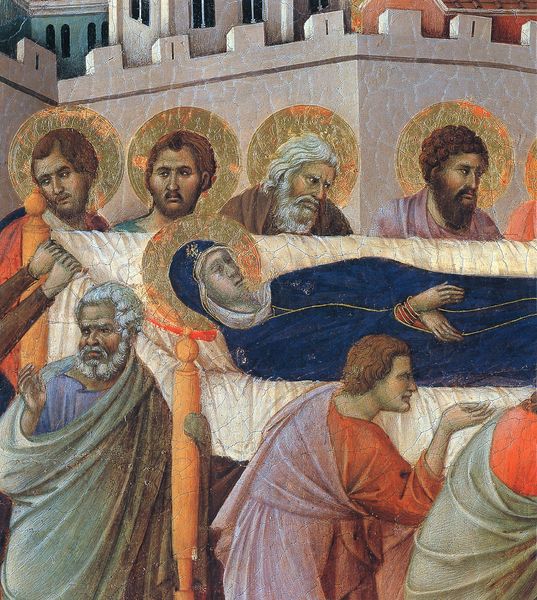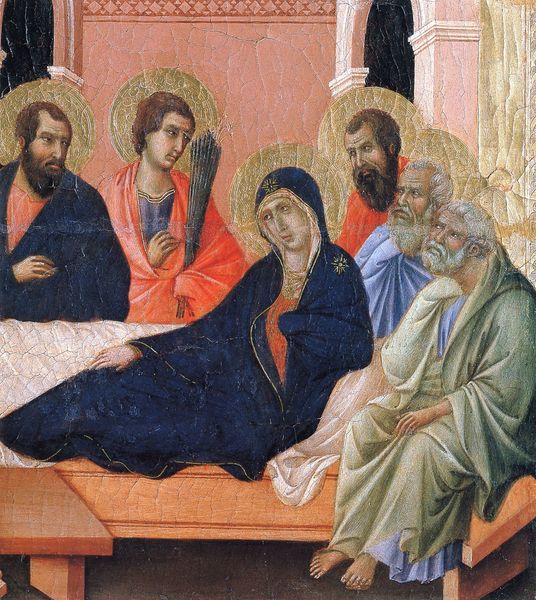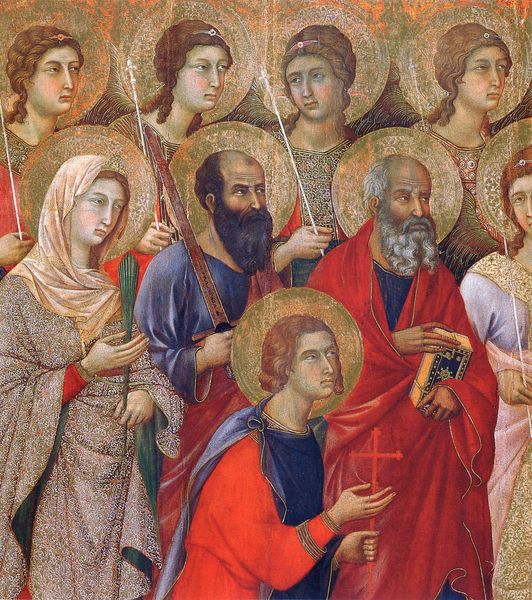
painting, fresco
#
painting
#
figuration
#
fresco
#
oil painting
#
history-painting
#
italian-renaissance
Copyright: Public domain
Stories of the Holy Cross was painted by Antoniazzo Romano around the late 15th century, using tempera on plaster to create a fresco. The artist's decision to use fresco, a technique of painting directly onto wet plaster, is significant. Applying pigments to a wall demanded speed and precision, due to the quick drying time of the plaster. The artist would have to be skilled at preparing pigments, mixing them with water, and applying them evenly to achieve the desired colors and effects. The medium itself thus influenced the appearance of the final image. The fresco secco technique, which is painting on dry plaster, allowed for finer details and richer colors. However, it demanded a mastery of brushwork and an understanding of how different pigments would react with the dry plaster. The halos, the folds of the drapery, and the delicate features of the faces are brought to life. Paying attention to these choices allows us to expand our understanding of art history beyond mere iconography. It reveals the profound relationship between the artist, their materials, and their cultural context, challenging traditional distinctions between fine art and craft.
Comments
No comments
Be the first to comment and join the conversation on the ultimate creative platform.
